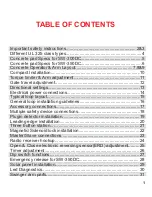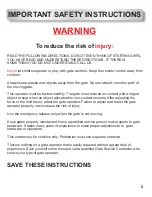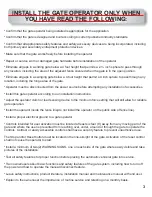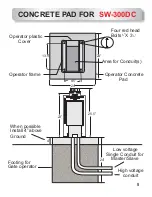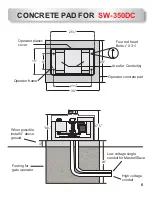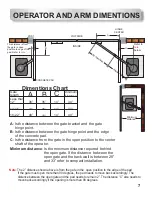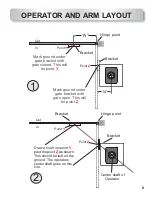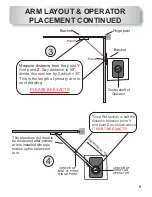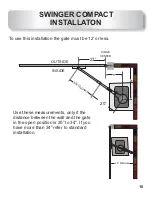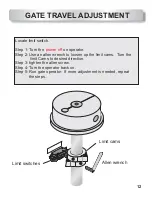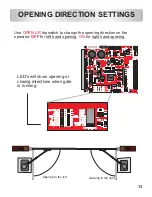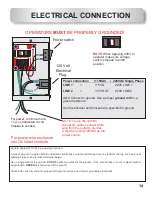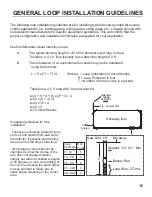
Class one: Residential
Class Two: Commercial or General Public Access
Class three: Industrial or limited Access
Class Four: Restricted Access
Other components required to satisfy UL 325
The six types of obstruction sensing systems are:
Type A:
Type B 1:
Type B2:
Type C:
Type D:
A vehicle gate operator intended for use at a home of one to four single family dwellings,
garages or parking area.
A vehicular gate operator intended for use at a commercial location or building such as a
multi-family housing unit (five or more single family units), hotel, garages, retail stores,
other buildings servicing the general public.
A vehicular gate operator intended for use at an industrial location or building such as a
factory, loading dock area, or other locations not intended to service the general public.
A vehicular gate operator intended for use at a guarded industrial location or building
such as airport security areas or other restricted access locations not servicing the
general public where unauthorized access is prevented via supervision by security
personnel.
Each class must have a primary and secondary means to sense and react to
obstructions within two seconds.
Inherent obstruction sensing system. This system must sense and initiate the reverse of
the gate within two seconds of contact with a solid object.
Provision for connection of a non-contact device can be used, such as a secondary
protection.
Provision for connection of a contact sensor. Examples include an edge device or
equivalent. This can be used for secondary protection.
Inherent adjustable clutch or pressure relief valve.
Provision for connection of or provided with and actuation device requiring continuous
pressure.
DIFFERENT UL 325 CLASS TYPES
4


